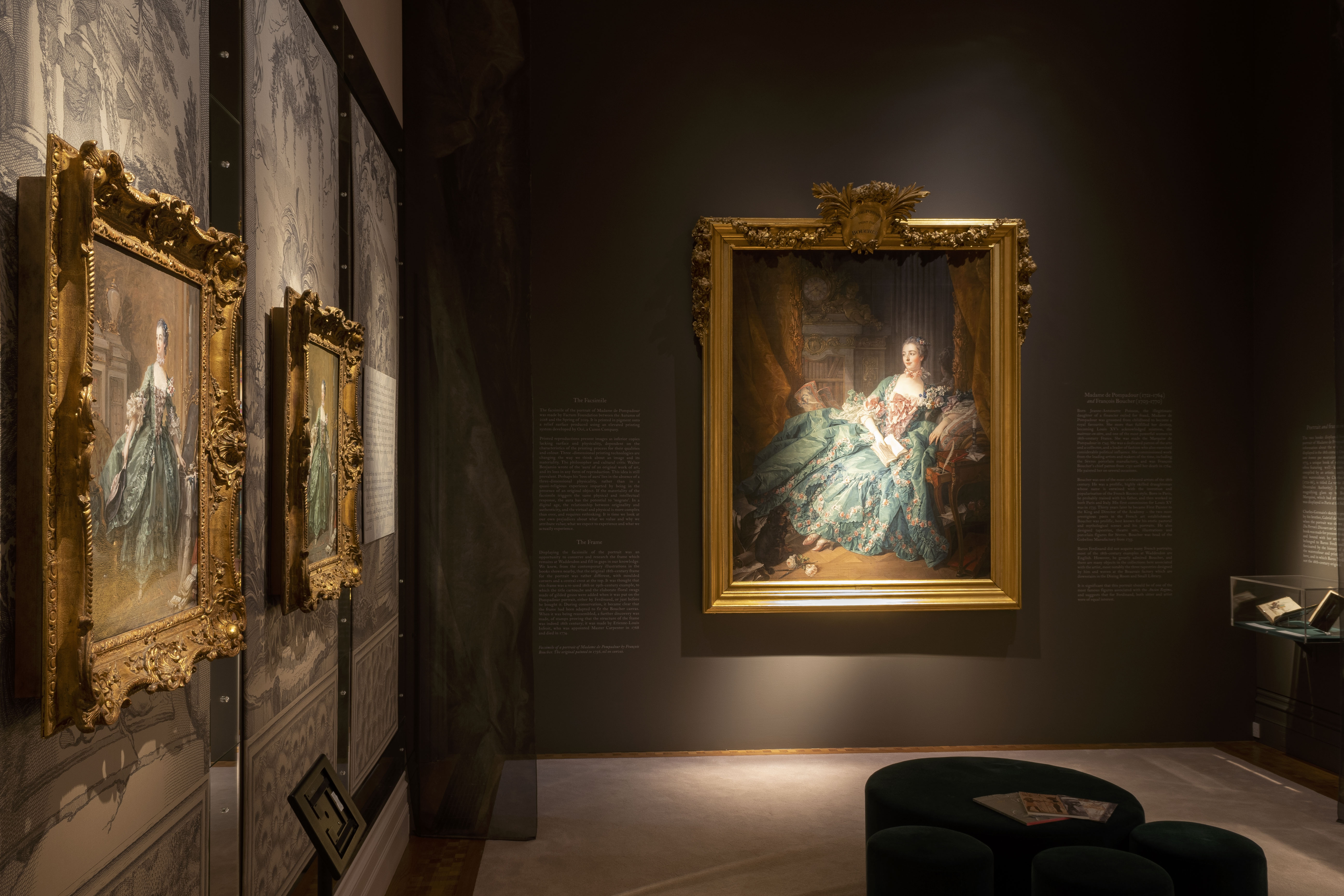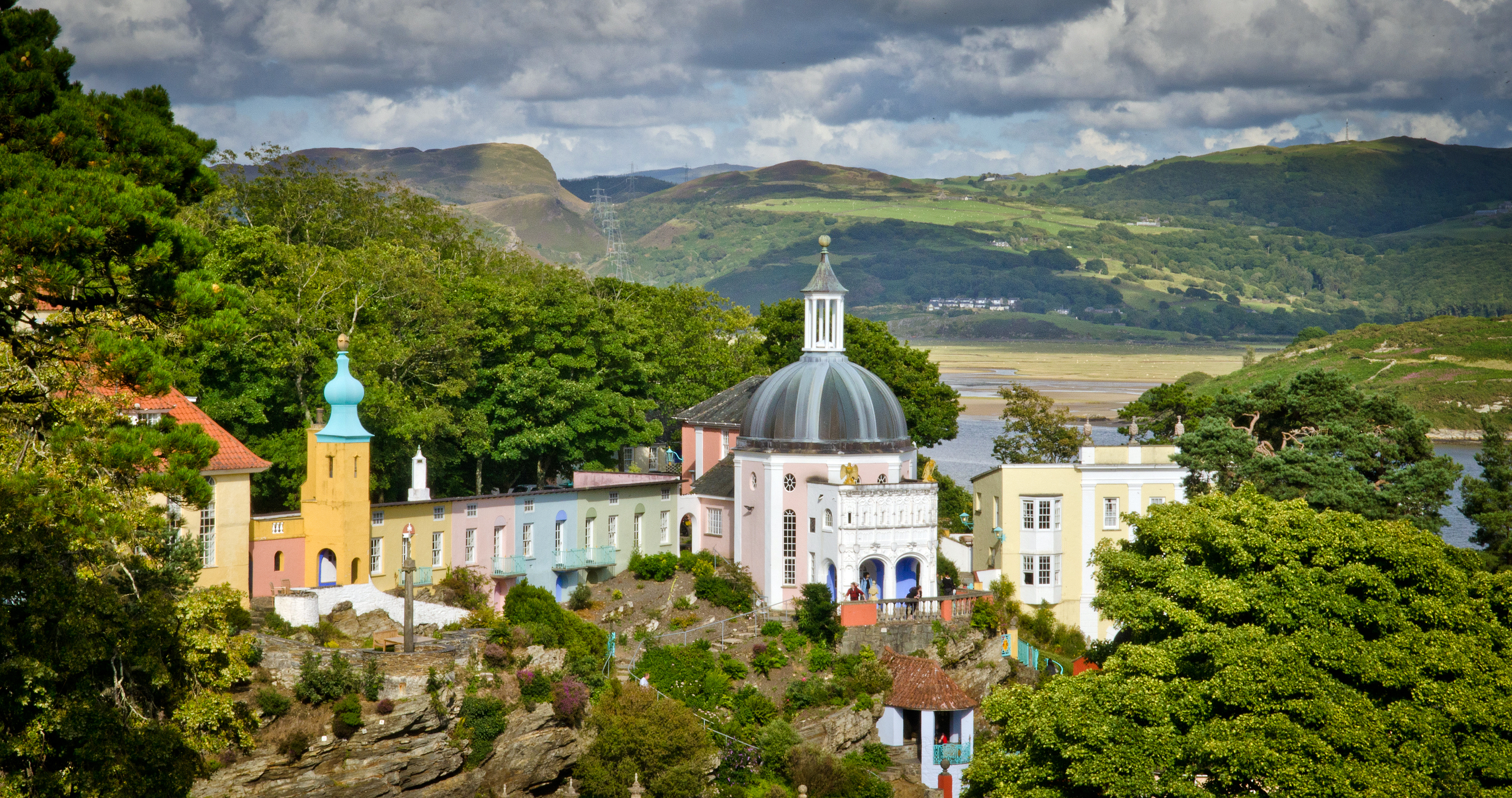In Focus: how technology can transform old art, producing replicas not to deceive, but to stimulate artistic thinking
Modern digital technology is transforming our understanding of the context and meaning of historic works of art. Emma Crichton-Miller investigates.


This summer, Waddesdon Manor in Buckinghamshire is celebrating a historic reconciliation. The focus is a new picture, indistinguishable from François Boucher’s sumptuous 1756 portrait of Madame de Pompadour, which Baron Ferdinand de Rothschild bought in London in 1887, from the sale of Lord Lonsdale’s collection at Carlton House Terrace.
Boucher’s painting of Louis XV’s mistress formed part of the Baron’s extensive and exceptional collection of French fine and decorative arts and it was one of his most prized possessions.
On his death in 1898, he bequeathed it to his brother Nathaniel. However, at some point at the end of the 19th century, it had become separated from the ornate 18th-century gilded frame that Rothschild had acquired for it. This frame, with its 19th-century cartouche, passed into the collections at Waddesdon, which were inherited by his sister Alice.
'It’s a copy made not to deceive, but to stimulate thinking about art objects and their meanings and to challenge our ideas about originality and imitation'
Today, Boucher’s painting, mounted in another frame, hangs in the grand upper galleries of the Alte Pinakothek in Munich, on loan from its current owners, HypoVereinsbank. Meanwhile, an exact replica, faithful to the original in every detail – dimensions, image, colour and surface texture – has been placed inside the newly restored frame at Waddesdon, where it’s currently the centrepiece of a small exhibition.
Within the main room of the show, this triumph of verisimilitude is placed on a stage, carefully framed by a theatrical curtain that echoes the drapery within the painting itself, as if to exaggerate the mystery and artificiality of what we are looking at. It has a wonderful effect, as Madame de Pompadour is revealed to us as Boucher saw her when he painted her in all her bewitching glory, with her magnificent rippling green dress, sprigged with silk roses, flowing across the canvas, to reveal her dainty feet.
Part of the point of the exhibition is to encourage us to marvel at this re-creation, but it also encourages us to consider what such a facsimile represents: it’s a copy made not to deceive, but to stimulate thinking about art objects and their meanings and to challenge our ideas about originality and imitation.
The new picture has been created by the Factum Foundation, a world leader in high-resolution digital scanning technologies. For this project, mounted in collaboration with the Alte Pinakothek, it has married traditional conservation and restoration techniques – the meticulous attention at a microscopic level to the surface of an original painting – with advanced 3D recording and re-materialisation technologies.
Sign up for the Country Life Newsletter
Exquisite houses, the beauty of Nature, and how to get the most from your life, straight to your inbox.
In the centre of the room stands the Lucida 3D Scanner, designed by one of Factum’s founders, Manuel Franquelo, which took more than 20 hours to record accurately the surface of the original painting, as if it were a landscape terrain. The colour was recorded separately, through multiple overlapping digital photographs. A corridor display leading from the main room of the exhibition explains the process.
The two sets of information are stitched together using computers by 21st-century artisans – weavers in the digital realm – before the whole work is re-materialised, or turned back into a physical replica.
This happens in several stages. First, the surface relief of the painting is re-created in pigmented resin layers, using advanced printing technology developed by the Canon company Océ.
A silicon mould is made from Océ’s print, from which the final surface of the new picture is cast in an acrylic gesso primer. This is like a skin placed over the canvas, onto which the colour image is then printed using a printer designed and built by Factum, before a final varnishing is done to match the original painting. As Adam Lowe, Director of the Factum Foundation, says: ‘What we mostly see when we look at an Old Master is the last layer of varnish.’
To amplify the project, Mr Lowe persuaded Lord Rothschild to allow an original work by Boucher that he owns to be submitted to the same process. This is an oil sketch for another, now lost, portrait of Madame de Pompadour of about 1750, which was inherited by Baron Edmond de Rothschild (1845–1943). The resulting copy, with a facsimile of the 18th-century frame, is shown in the exhibition alongside the original and it is very hard to tell which is authentic and which not.
As Mr Lowe explains, our guesses tell us more about what we’re expecting to see than about any specific qualitative difference in our experience of the two objects.
These exercises in reproduction are tours de force, but they also have a purpose.
‘To forge a painting is to study it – we’re revealing things that allow you to study the art more deeply,’ says Mr Lowe.
The Factum Foundation is a non-profit sibling to Factum Arte, a multi-disciplinary workshop set up in 2001 and based in Madrid. Factum Arte is dedicated to the digital mediation of cultural heritage and the production of facsimiles, as well as to the fabrication of ambitious multi-media contemporary artworks for the likes of Grayson Perry and Marina Abramovic.
One of its early triumphs was a full-scale reproduction of the burial chamber of Thutmose III (1490bc–1436bc) for an exhibition at the National Gallery of Art in Washington titled ‘The Quest for Immortality: Treasures of Ancient Egypt’, held in 2002.
Another was the 2006 high-resolution photography of The Wedding Feast at Cana (1563), the Louvre’s monumental masterpiece by the Italian painter Paolo Veronese, in order to make an exact copy to fill the original space it had occupied in the refectory of the San Giorgio Monastery in Venice (now the Fondazione Giorgio Cini).
As Elisabetta Povoledo wrote in the New York Times: ‘Details are reproduced down to the most minute topography, including the raised seams rejoining the panels that Napoleon’s troops cut the painting into when they transported it to France in 1797.’
If one of the benefits of Factum Arte’s interventions is technical – teaching us a great deal about how major works of art are made – another is historical. By seeing The Wedding Feast restored to its intended setting, we learn so much about its original meaning.
Similarly, Boucher’s great portrait of Madame de Pompadour makes particular historical sense within the collections of Baron Ferdinand de Rothschild as a supreme expression of ‘le goût Rothschild’, an elaborate 19th-century decorative style based on 18th-century taste.
Indeed, the healing of historical wounds has become an essential aspect of Factum Arte’s endeavours, as, fittingly for a post-quantum era, it enables iconic objects to exist in two places simultaneously.
Designed by the architect Charlotte Skene Catling, the Waddesdon exhibition is an exuberant celebration of the power and pleasure of reproduction. Long strips of mirror multiply reflections of both paintings infinitely and the walls are hung with silk screens printed with a series of elaborate mythological scenes – Rocaille (Rococo), Leda, The Triumph of Priapus, The Triumph of Pomona, and Pastorale – taken from designs by Boucher. These designs were originally translated from drawings on paper to etchings and then to tapestries to create Rococo room-dividers.
'Indeed, the Boucher portrait includes, translated into oil paint, a print made by Madame de Pompadour herself, barely decipherable in the piles of papers scattered around the room'
The bottom quarter of the silk screens is printed with images taken from another Factum Arte experiment – organic digital modelling of natural forms.
The screens are a reminder that the 18th century saw an explosion of experiment in the translation and reproduction of images. Indeed, the Boucher portrait includes, translated into oil paint, a print made by Madame de Pompadour herself, barely decipherable in the piles of papers scattered around the room.
She had printed it on her own press in Versailles from an engraving she had made of a drawing by Boucher, which, in turn, was a reworking of a carnelian carved by the Court gemstone engraver, Jacques Guay. Such fluid transmissions of visual imagery were part of the lifeblood of the Age of Enlightenment to which the politically powerful Pompadour belonged.
It was in a similarly pioneering, pedagogic spirit that Henry Cole bought and commissioned plaster casts and electrotype copies of masterpieces of European architecture, sculpture and design for his fledgling South Kensington Museum in the 19th century. The recently renovated purpose-built Cast Courts that hold them within today’s V&A were the first such galleries to be built.
In 1867, Cole was the moving spirit behind the 1867 Convention for Promoting Universally Reproductions of Works of Art, signed by 14 European countries that agreed to allow copies for the purposes of education.
By the beginning of the 20th century, attitudes towards copies had changed radically. Anxiety about their deleterious impact on the recognised value, or ‘aura’, of original works – as analysed by the German philosopher Walter Benjamin in his seminal essay The Work of Art in the Age of Mechanical Reproduction (1936) – led to other significant qualities, such as usefulness and beauty, being overlooked.
Today, we are experts in the language of reproduction. Awareness of the modern threats to global heritage, such as climate change, urbanisation, mass tourism and regional conflicts, has stimulated a renewed interest in the whole idea of copying, recasting it as a heroic cultural enterprise quite divorced from the disreputable production of fakes. It is into this space that Factum Arte has stepped with its pioneering technologies.
Over the summer, there are other opportunities to see the benefits of this renewed enthusiasm. On show in Winchester, at Winchester Discovery Centre and the imposing 13th-century Great Hall, is ‘Michelangelo’s Sistine Chapel: A Different View’ (until September 29). As part of the most recent comprehensive conservation project carried out in the Vatican chapel (completed in 1994), the ceiling frescoes, as well as The Last Judgment, were photographed. These images have now been reproduced at high resolution and printed onto special fabric webs.
The exhibition offers no attempt at verisimilitude – the images are a third, at most, of their original scale – but the resolution is fantastic and the fabric webs offer a satisfactory simulation of paintwork on plaster. As a learning tool, the experience is invaluable: you can now study these astonishing images without getting neck ache or being crushed by tourists.
The Bodleian Library in Oxford is hosting an exhibition that explores historic maps – ‘Talking Maps’ (until March 8, 2020).
The library has commissioned from the Factum Foundation not a reproduction, but a re-creation of a lost artefact: a large silver disc engraved with a world map, which was commissioned by the Norman King Roger II and designed by the Muslim geographer Muhammad al-Idrisi in the 12th century.
What has survived are the 70 maps drawn by al-Idrisi as preparatory work for the disc. Factum Arte scanned all of these before digitally stitching them together, transforming that rectangular image into a circular one and then translating it into a form of digital representation that could communicate with its CNC milling machine. The result is spectacular: a silver disc shimmering with a map of the whole world as known in 1154.
More of an original creation than strictly a reproduction, this project shows how modern technologies can enable us not just to reproduce the past, but to converse and collaborate with it.
‘Madame de Pompadour in the Frame’ is at Waddesdon Manor, Aylesbury, Buckinghamshire until October 27, for more information visit www.waddesdon.org.uk. For more information about the Factum Foundation, visit www.factum-arte.com.
Country Life is unlike any other magazine: the only glossy weekly on the newsstand and the only magazine that has been guest-edited by HRH The King not once, but twice. It is a celebration of modern rural life and all its diverse joys and pleasures — that was first published in Queen Victoria's Diamond Jubilee year. Our eclectic mixture of witty and informative content — from the most up-to-date property news and commentary and a coveted glimpse inside some of the UK's best houses and gardens, to gardening, the arts and interior design, written by experts in their field — still cannot be found in print or online, anywhere else.
-
 Ford Focus ST: So long, and thanks for all the fun
Ford Focus ST: So long, and thanks for all the funFrom November, the Ford Focus will be no more. We say goodbye to the ultimate boy racer.
By Matthew MacConnell
-
 ‘If Portmeirion began life as an oddity, it has evolved into something of a phenomenon’: Celebrating a century of Britain’s most eccentric village
‘If Portmeirion began life as an oddity, it has evolved into something of a phenomenon’: Celebrating a century of Britain’s most eccentric villageA romantic experiment surrounded by the natural majesty of North Wales, Portmeirion began life as an oddity, but has evolved into an architectural phenomenon kept alive by dedication.
By Ben Lerwill